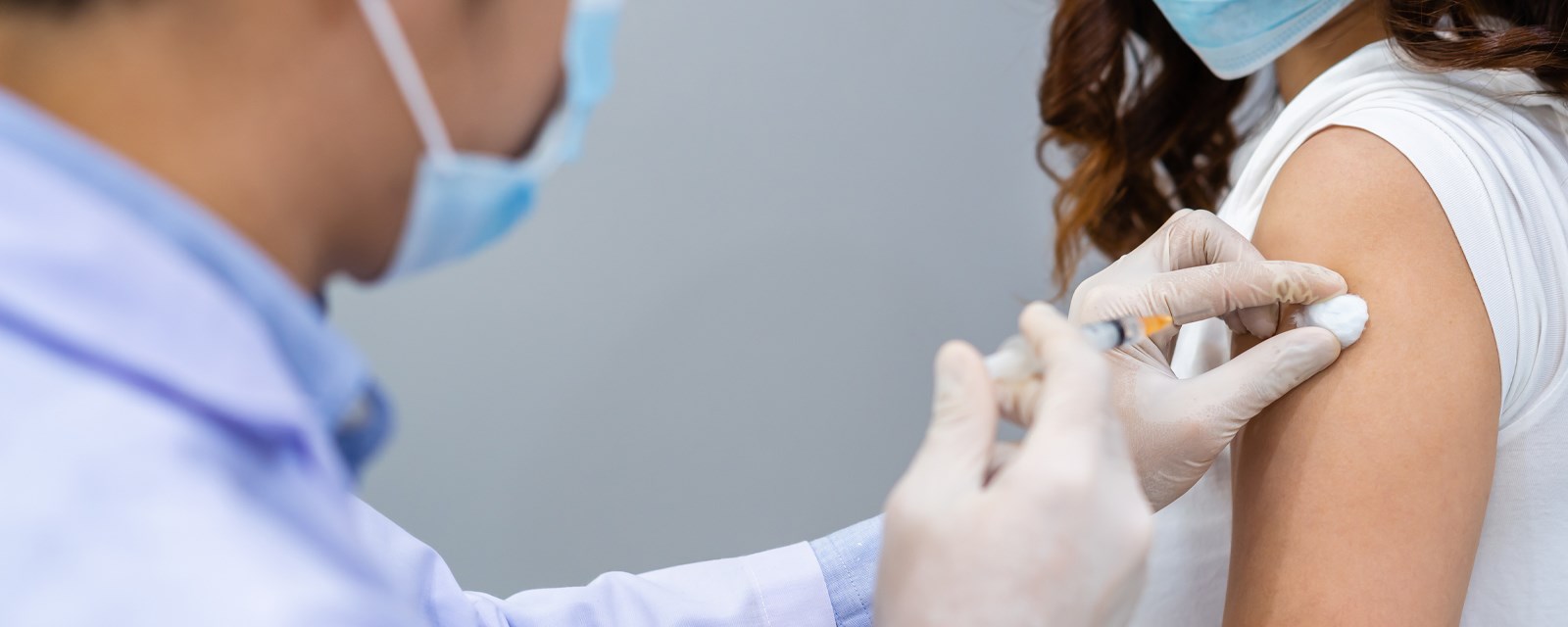
Joining the effort in vaccinating against COVID-19
Brian Wang is a final year MBBS/PhD student at Imperial College. Alongside his clinical placements and studies ahead of finals exams in March, Brian is also the RSM Student Section Media Officer and Founder of In2MedSchool, a community interest company which supports children from underprivileged backgrounds into medicine. Since September, they’ve paired almost 1,000 school students to a medical student mentor who provides free, 1-to-1 mentorship. Following his finals, Brian will become an academic foundation doctor in North-West London.
Since the start of the pandemic, Brian has been involved in volunteering on a COVID-19 ward in a North-West London Hospital and was recently recruited as a vaccinator at the Wembley Vaccination hub. Brian shares his story on being a vaccinator whilst revising for finals.
How I got involved with the vaccination programme
Just before Christmas, I received an email informing us that medical students would be given the opportunity to join the Imperial Trust vaccination programme. I signed up straight away. I was excited to join the effort in vaccinating against COVID-19 - the virus has changed the world as we know it. It hits close to home as my dad is in the high-risk category. Thankfully, he has been able to shield working from home since March, but I know many are not that lucky.
Preparing for the programme
Once confirmed on the programme, I was given access to online learning information about COVID-19, the vaccines used and how to work safely as a vaccinator. In the new year, I received an email informing me that shifts were available at the site opening in Wembley Park. I replied with my availability and received confirmation that I would be working 7.30am-8.30pm on Sundays. As simple as that, I was a vaccinator.
Day in the life of the vaccination programme
On the morning of my first shift, I attended the 7.30am briefing for new volunteers. I was greeted by the team of medical professionals running the centre. During the induction, new volunteers are given a tour of the centre, informed of the training process and matched to a ‘buddy’ for supervision before they are signed off as competent vaccinators.
The centre runs like clockwork. Upon arrival, patients are greeted by a ‘front of house’ volunteer, who takes down their initial information. They are then shown to a cubicle where another volunteer carefully records their medical history on the IT system. Runners are stationed to then guide patients to a vaccination cubicle as soon as it is safe to use.
Once in the cubicle, we then greet the patient and check the key details before preparing them for the vaccination. The drawing up of the vaccine is done by senior pharmacists, ensuring that the vaccines are safely prepared and ready for delivery. Once the vaccine is drawn up into a syringe, they are placed in a safe area for collection and use. On my first day I vaccinated 74 people and met many amazing characters for whom this was their first time venturing outside their homes for over 10 months.
Maintaining patient safety
One of my fears during my time as a COVID ward volunteer and vaccinator has been how we would ensure the safety of these vulnerable patients. It quickly became clear that everything possible has been done to minimise risk of infection at the centre. The one-way system starts at the front door and carries on throughout the entire centre, through the vaccination hub, and out through the exit. Sanitation stations are available throughout the whole centre, and every member of the team meticulously cleans all surfaces in between use.
Balancing with studies
As I attend my medical school clinical placements on weekdays and help run In2MedSchool on Saturdays, the only time I could volunteer as a vaccinator is on Sundays. To fit the volunteering shifts in with my other responsibilities and revision for finals, I had to be very disciplined with my time management. Good sleep hygiene, including turning all screens off at 10pm, and a morning routine that involves waking up at 5am to do yoga and exercise, has allowed me to look after my own health. With medical school finals around the corner, I knew volunteering could be challenging, but it was something I was determined to do, and I am very grateful that the University provided us with this opportunity.
The events over the last year have devastated so many lives. However, it has shown me what people can do for each other when we work together within a community. I’m hugely excited to finish my medical school career and join our fantastic NHS in Autumn 2021.
Find out more about In2MedSchool and how it supports those wanting to get into medicine. www.in2medschool.com.
The RSM’s COVID-19 learning hub is available to help support healthcare professionals with access to education and learning resources during COVID-19, including the COVID-19 Series webinars.
